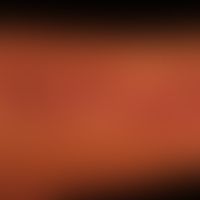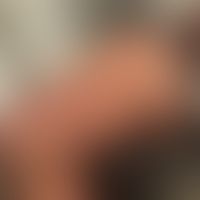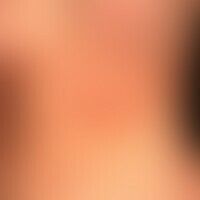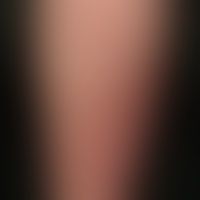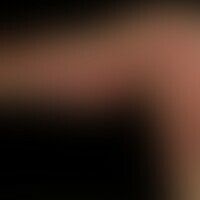Image diagnoses for "Plaque (raised surface > 1cm)", "red"
434 results with 1903 images
Results forPlaque (raised surface > 1cm)red
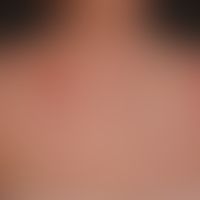
Angry back T78.8
Angry back: Multiple "false positive" and clinically irrelevant test reactions in epicutaneous testing. 48h reading.
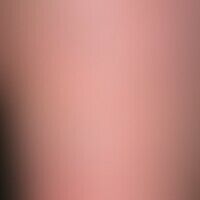
Papillomatosis cutis lymphostatica I89.0
Papillomatosis cutis lymphostatica. detail enlargement: brownish-red papules and plaques. in the center of the picture isolated scratch excoriations.
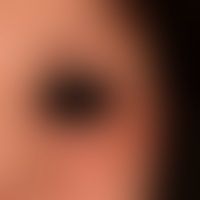
Airborne contact dermatitis L23.8
Airborne Contact Dermatitis: chronic (>6 weeks) extensive, enormously itchy and burning eczema with irregular, extensive infestation of the exposed facial areas including the eyelids.
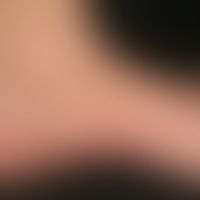
Lichen planus (overview) L43.-
Lichen planus exabthematicus: unusual infestation of the soles of the feet, with itchy, red, in places confluent, smooth, shiny papules and plaques; skin lesions extend beyond the skin of the groin

Seborrheic dermatitis of adults L21.9
Dermatitis, seborrhoeic: chronically recurrent disease with constant, blurred, sometimes slightly itchy, red spots and plaques; distinctly bds. eyelid eczema

Lupus erythematosus subacute-cutaneous L93.1
Lupus erythematosus subacute-cutaneous: Infestation of the palms in the cream of a generapized exanthema.

Primary cutaneous diffuse large cell b-cell lymphoma leg type C83.3
Primary cutaneous diffuse large cell B-cell lymphoma leg type: Survey image : Since about 12 months persistent, slowly progressing, about 4-5 cm in diameter, irregularly shaped, bulging, deep red tumor with smooth surface in a 75-year-old patient with a central atrophic, scar-like aspect.
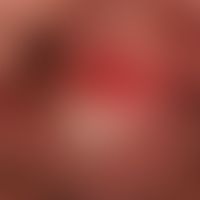
Balanitis plasmacellularis N48.1
DD Balanoposthitis plasmacellularis:painless, permanent plaque that has been present for years, growing continuously, diagnosis: erythroplasia (carcinoma glans penis!)
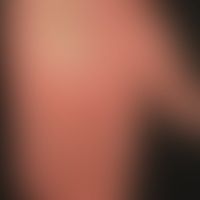
Psoriasis palmaris et plantaris (plaque type) L40.3
Psoriasis palmaris et plantaris (plaquet type): island-like, wart-like plaque covered with firmly adhering scales. has been present for several months in a scattered pattern. deep transverse rhagade.
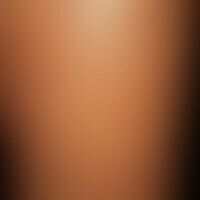
Graft-versus-host disease chronic L99.2-
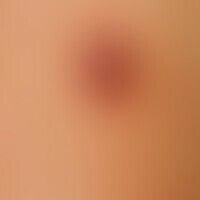
Nevus melanocytic dysplastic D48.5
Nevus, melanocytic, dysplastic. 1.5 x 0.8 cm in size, differently structured, multicoloured melanocytic nevus, with a blurred brown soft brown papule in the centre, surrounded by a ring-shaped, reddish-brownish plaque.

Psoriasis vulgaris chronic active plaque type L40.0
Psoriasis vulgaris chronic active plaque type: relapsing activity after angina tonsillaris, partly larger plaques and disseminated papules.
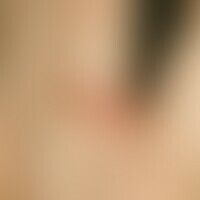
Bowen's disease D04.9
Bowen's disease: sharply defined plaque that has existed for 2 years, interspersed with scales, crusts and erosions. Clear actinic damage to the skin of the back of the hand (therapy: 5% Imiquimod cream, 3 x per week under occlusion, complete healing).
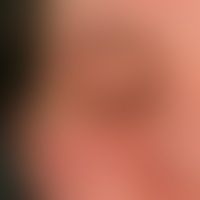
Psoriasis seborrhoic type L40.8
Psoriasis seborrhoeic type: for several months constant location, sharply defined, therapy-resistant, only slightly elevated, homogeneously filled red-yellow, slightly accentuated, scaly plaques at the edges; eyelid homogeneously affected.

Lupus erythematosus tumidus L93.2
Lupus erythermatodes tumidus:recurrent disease patternforseveral years. no itching, no other subjective complaints. significant improvement of symptoms after treatment with antimalarials.
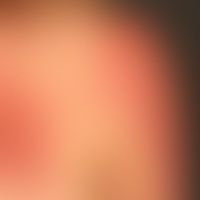
Contact dermatitis allergic L23.0
Pronounced. large-area allergic contact eczema: large, blurred (scattered edges), itchy, red, rough, scaly plaques that have existedfor 4 weeks.

